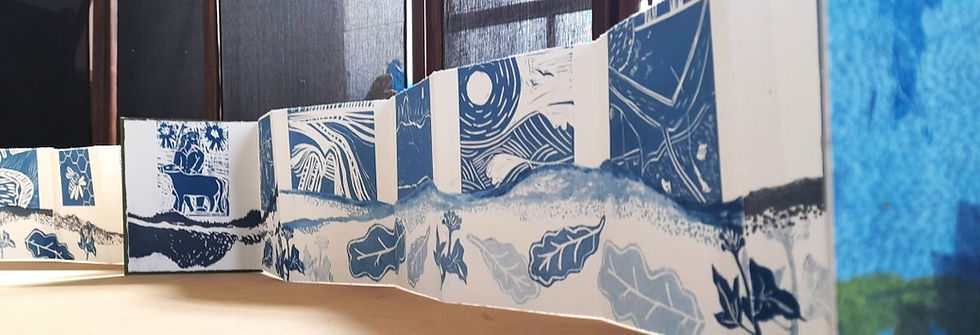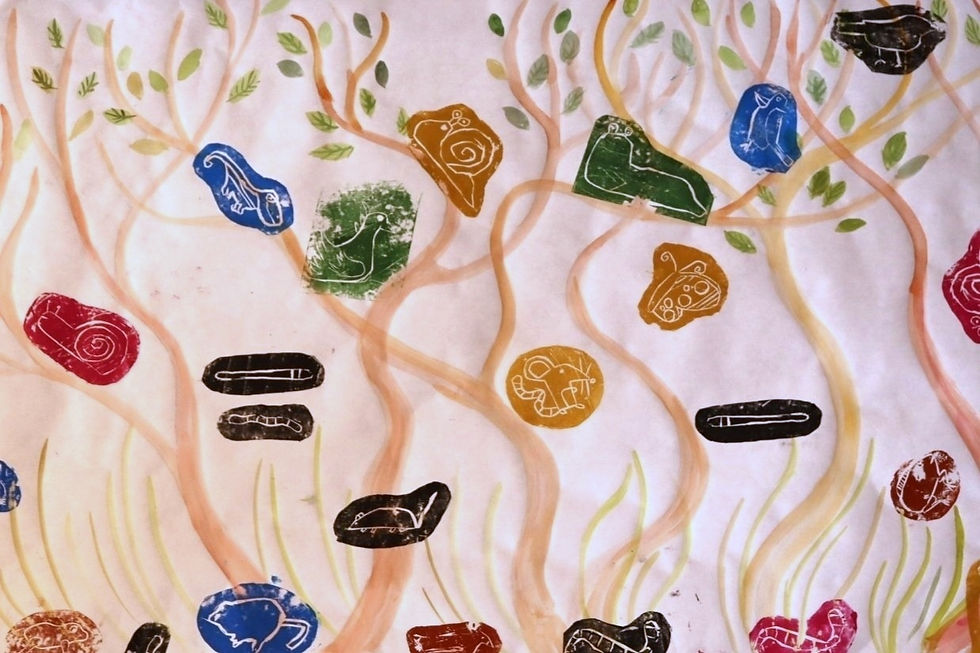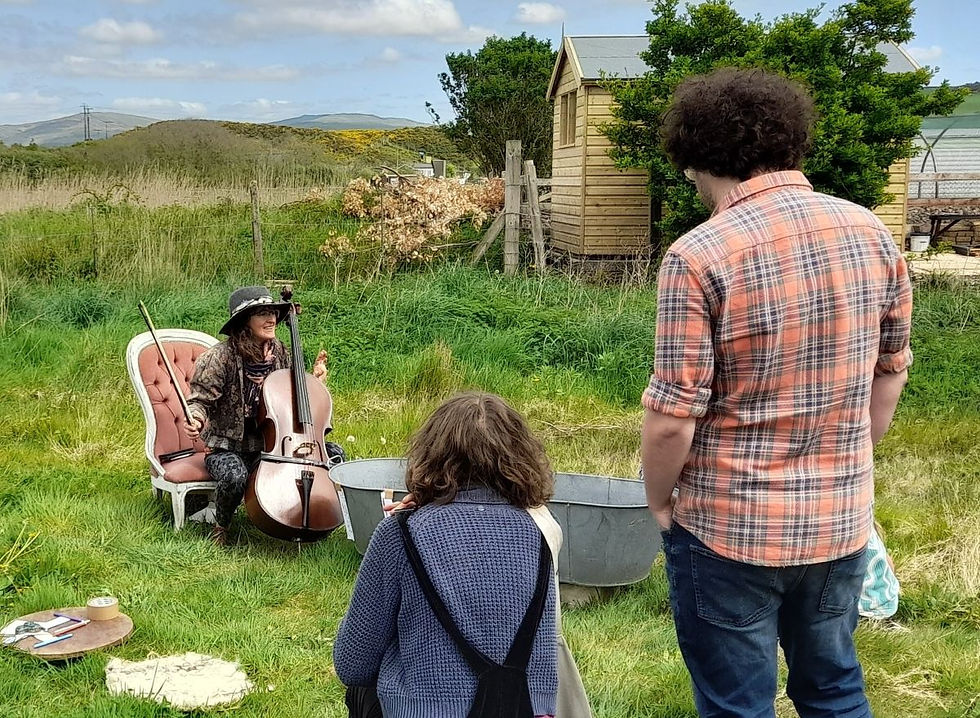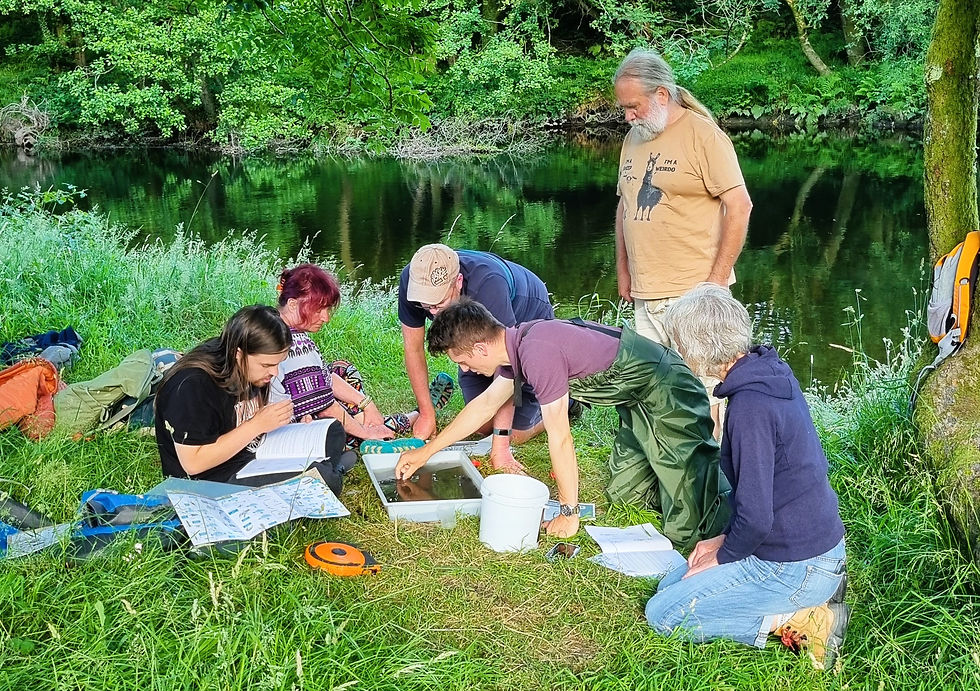CELF: a story of the Dyfi
- dyfibiosphere
- Jul 30
- 4 min read
Updated: Jul 31
Naomi Heath, Engagement Officer on the Tir Canol project, describes how she worked with three resident artists to bring a new angle to environmental work around the Dyfi. Darllen yn Gymraeg

The Biosphere is a culture-rich, bilingual area with estuaries of national importance. It holds the voice of heritage and environment across the valley, a place shaped by imagination and echoes of deep history. Tir Canol supports co-designed solutions that empower communities and enrich nature recovery in this unique landscape.
Working with three local artists in residence, I drew on a decade of community-based arts experience to combine arts mentoring, language and place-based knowledge. Staying rooted in the Tir Canol Blueprint, we prioritized relationships and reflected local needs while supporting the artists’ growth.
The artists were:
Veronica Calarco: Founder of Stiwdio Maelor in Corris, Veronica specialises in the endangered craft of lithography. She walked sections of the Dyfi River, foraged natural materials, and reflected on the riparian edge through printmaking. Visiting groups like Gerddi Bro Ddyfi and Coed Talybont, she helped people uncover hidden memories and a deeper sense of place through line prints.
Ailsa Mair: A cellist and storyteller, Ailsa explored what it means to care for land and each other. Through sound recording, conversations, and folklore, she gathered ideas as people sipped soup during community meals hosted by Eginiad at the Taj Mahal and explored Taliesin’s myth at Coed Lleol’s roundhouse. These shared moments were distilled into a sound potion of renewal.
Hannah Doyle: Hannah spent time with the land and community creating lino and woodcut prints. She worked with local children at Talybont School and reflected on what it meant to return home. These were her first public workshops, warmly received. Her goal is to carry what she has learned in rural areas into cities, particularly through work with hedgerows and urban nature.
Community immersion
Supporting the artists as they became part of the community was a joy. Whether planting trees or attending Climate Conversations hosted by the Biosphere and Tir Canol, we followed a simple co-design principle: listen, reflect, and create together.
Each artist brought unique skills. Hannah’s warmth and humour made her workshops with children fun and inspiring. Veronica helped people uncover hidden stories and memories. Ailsa turned local myths into beautiful songs that bridged past and present in almost choral melody. Together, they created a rich storytelling experience that celebrated community and land, and offered renewal.
The residencies culminated in a pop-up exhibition at the Star of the Sea in Borth, attended by over 80 people, with talks, workshops, and music.

What people said
“Fantastic to be part of the journey and get an opportunity like this.”
“This is why I live here, it’s community.”
“I’ve always wanted to try something like this, and I’m learning about my own community at the same time.”
The community members helped run events, serve cake and keep conversations going. Some started new projects inspired by the residency, including one sparked by inner-city hedgerows. Another exhibition popped up at Maelor because of connections made during the residency. These moments reflect the power of embedded listening.
What changed

The project supported nature by engaging the community. Ailsa’s workshops invited people to explore how we rebuild both nature and ourselves. Hannah collaborated with Coed Talybont and the Community Flood Group on land care and resilience. Activities included tree planting supported by Coed Cadw, site visits, and connecting creative practice to ongoing local efforts. New ideas emerged, like farm-scale compost tea, and one person joined the tree planting group.
The artists grew alongside the community. Ailsa embraced co-design and facilitation. Hannah found her voice as a speaker and led her first workshops with us. Veronica offered steady, thoughtful support. What began as a short project deepened as people connected, reflected, and grew. One artist said, “This journey came at the right time. I can see how I can be an artist here at home.”
Why It mattered
This was not about promoting Tir Canol. It was about being present, building trust, and supporting what was already happening. Artists engaged with complex, ongoing projects like the co-design workshops in Talybont, and the Biosphere’s Climate Conversation. They helped amplify local voices and strengthen relationships. They worked bilingually, reflecting the lived perspectives of the valley. One artist had their work played on local radio. We are already seeing collaborations and unexpected legacies shaped by these creative voices weaving stories across the river edges.
Ongoing conversations
Numbers tell one story, but the real connections came through local radio, community papers, conversations, and word of mouth. While this round of residencies has ended, it is just the beginning. Another call for artists will follow soon. A small seed has started to put down roots.We are excited for what comes next, we can only do this because we do it together.
Thank You
Many thanks to all the groups, friends, and partners who shared their time, resources, energy, and space with us throughout this project. Celf is a strand of the Cynnal project hosted by RSPB and funded by Esmée Fairbairn.






Comments